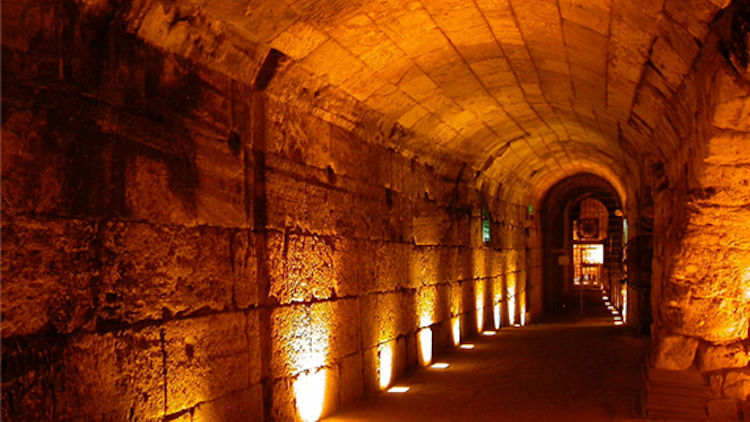Israel’s Top 4 Hidden Underground Tunnels Totally Worth Visiting

With a history spanning back to the beginning of times, Israel is full of mysteries and underground worlds that are waiting to be discovered. For travelers truly looking to go off the beaten path, here are four of Israel’s secret underground tunnels that grants visitors a peek into life during ancient times.
Western Wall Tunnels: First discovered in the 19th century and uncovered after 1967, this fascinating tunnel allows visitors to time travel back to the first century CE to discover ancient Jerusalem during its glory days. The complex underground tunnels can be accessed by a guided tour where guests can walk subterranean spaces with exquisite archeological findings, such as large stone arches, water pits, an underground synagogue, an ancient water aqueduct that ends at the Strouthion Pool, and more.
Hezekiah’s Tunnels (also known as Siloam Tunnels): Beneath the ancient City of David, travelers can explore the underground mysteries of Hezekiah’s Tunnel, where water has flowed since the time of the prophets. When Jerusalem was preparing defenses against the approaching Assyrian army in the 8th century B.C.E., King Hezekiah decided to protect the water source by diverting its flow deep into the city with an impressive tunnel system. Today, guests can still trek through Hezekiah’s Tunnel in knee-high water to peak into the world of Herod and the Second Temple period in Jerusalem.
Herodium National Park: In the first century BCE, King Herod challenged the forces of nature and created one of the most daring structures of the ancient world – Herodium. The manmade hill is located southeast of Jerusalem in the Judean desert and served as King Herod’s luxurious summer palace and his burial site. Guests can visit the fortress to explore the underground systems which include remains of a water tunnel from the time of the Great Revolt and escape tunnels from the Bar Kokhba Revolt.
Rosh HaNikra Grottoes: Located in the Upper-Galilee, Rosh HaNikra Grottoes are characterized by its unique beauty and turquoise color that changes during the day and seasons. The grottoes are cavernous tunnels as a result of a geological and biological process that has been going on for thousands of years due to the power of the sea. This rare beauty became accessible to the general public in 1968, when a tunnel was excavated to the natural grottoes, slightly above the sea surface. V

No comments:
Post a Comment